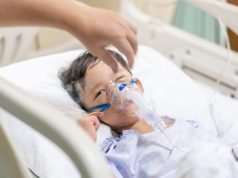Age, previous antibiotic receipt, private insurance up odds of macrolide versus amoxicillin receipt
THURSDAY, March 9, 2017 (HealthDay News) — For children with community-acquired pneumonia (CAP), patient and nonclinical characteristics are associated with receipt of macrolides and broad-spectrum antibiotics versus amoxicillin, according to a study published online March 7 in Pediatrics.
Lori K. Handy, M.D., from the Alfred I. DuPont Hospital for Children in Wilmington, Del., and colleagues conducted a retrospective cohort study in an outpatient pediatric primary care network to examine the patient and clinician characteristics associated with prescription of amoxicillin versus macrolide or broad-spectrum antibiotics for CAP.
The researchers found that 40.7, 42.5, and 16.8 percent of the 10,414 children received amoxicillin, macrolides, and broad-spectrum antibiotics, respectively. Patient age ≥5 years, previous antibiotic receipt, and private insurance were factors associated with increased odds of receipt of macrolides versus amoxicillin (adjusted odds ratios, 6.18, 1.79, and 1.47, respectively). Across clinics, the predicted probability of a child being prescribed a macrolide varied from 0.22 to 0.83. Suburban practice and private insurance were nonclinical characteristics associated with increased odds of receipt of broad-spectrum antibiotics versus amoxicillin (adjusted odds ratios, 7.50 and 1.42, respectively).
“Factors unlikely related to the microbiologic etiology of CAP were significant drivers of antibiotic choice,” the authors write. “Understanding drivers of off-guideline prescribing can inform targeted antimicrobial stewardship initiatives.”
Abstract/Full Text (subscription or payment may be required)
Editorial (subscription or payment may be required)
Copyright © 2017 HealthDay. All rights reserved.








